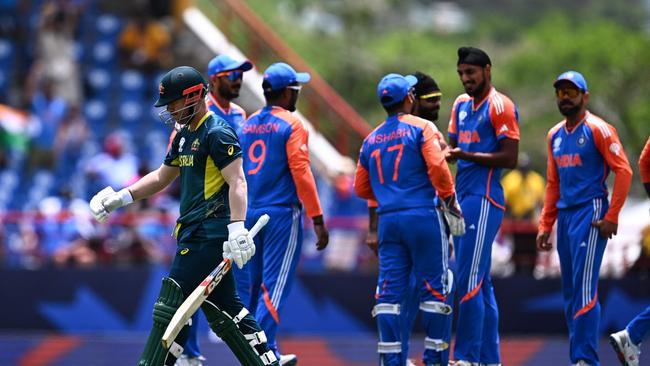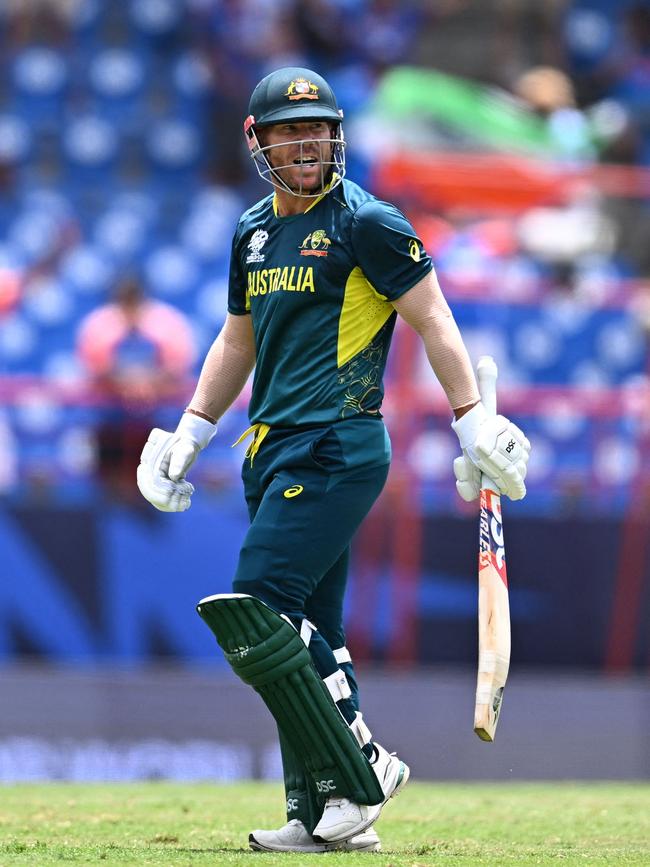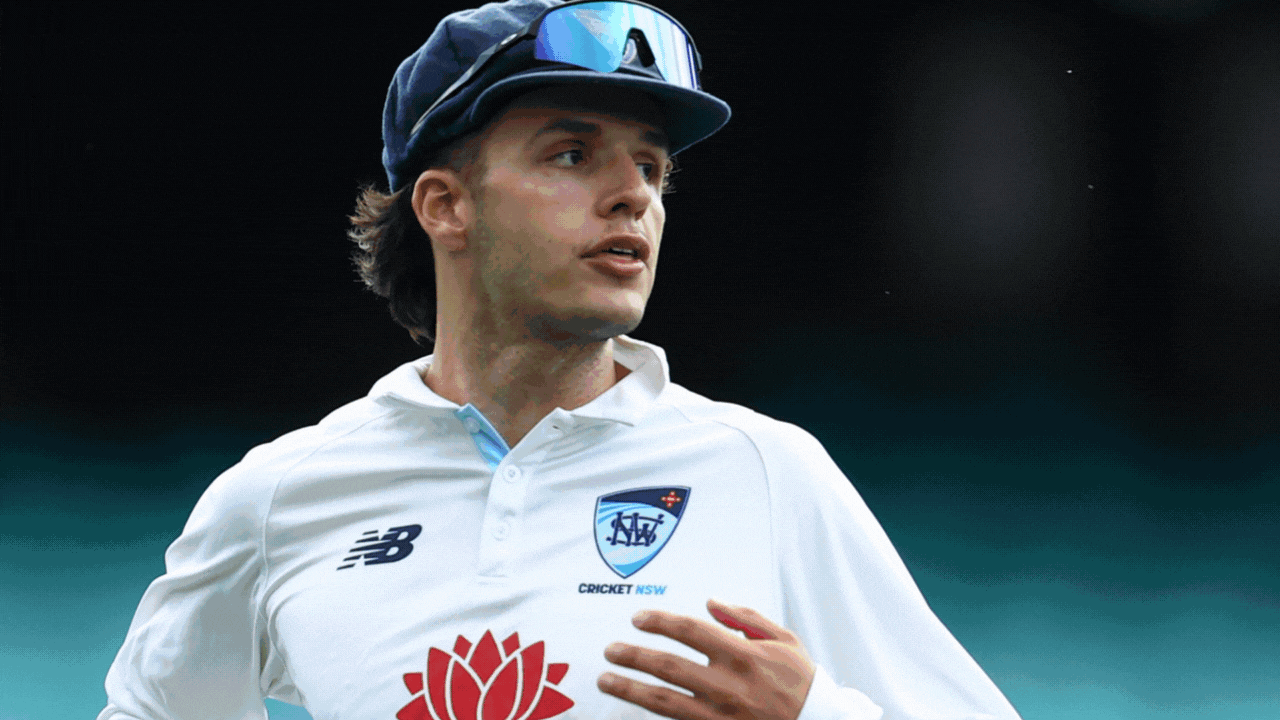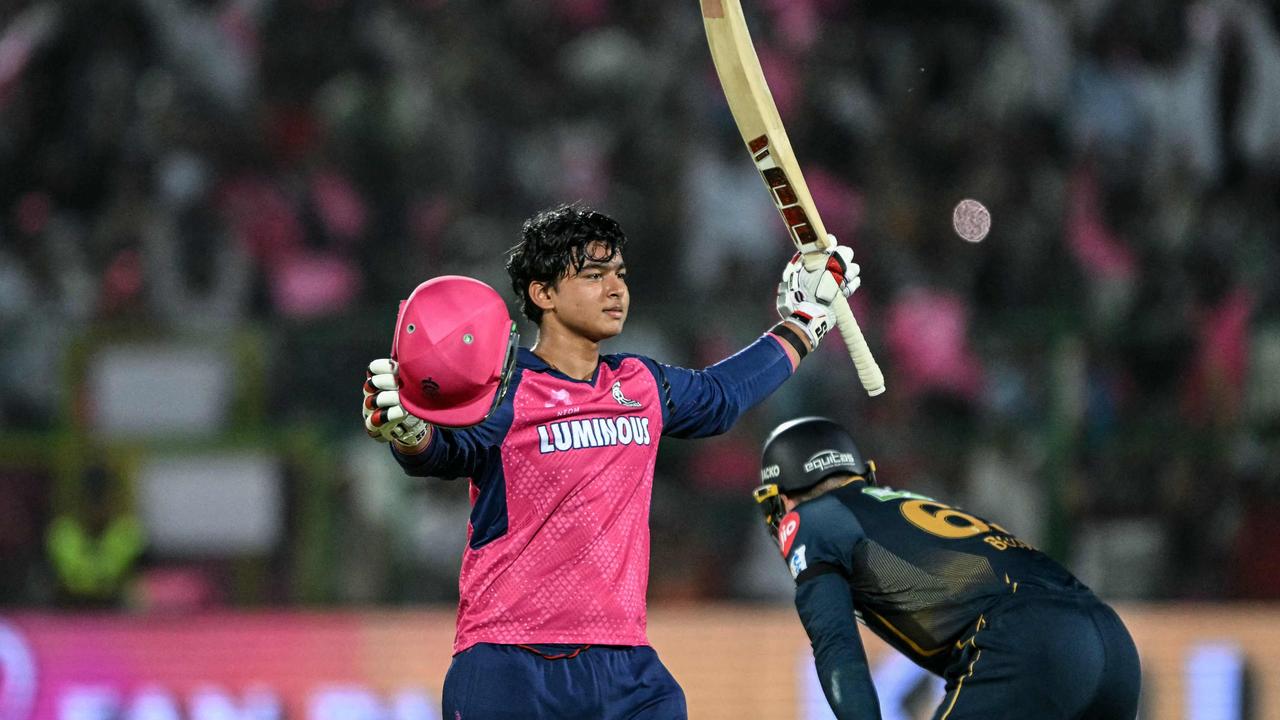T20 World Cup: David Warner exit with no fanfare while his country sleeps
Australia’s most polarising cricketer bid farewell to the game he he set alight in front of a disappointing crowd and while his home fans slept.

There he went, punching his bat, throwing a mild uppercut to his helmet grille, and shaking his head vigorously. David Warner threw one forlorn glance back towards the pitch and then left the Daren Sammy Cricket Ground with another shake of the head. You didn’t know it yet. But you kind of did.
Potentially the last bow of one of the greatest and yet divisive careers in the history of the game.
No guard of honour, no fanfare, no standing ovation, and the worse bit, no confirmation it was officially the end. It wasn’t just the anticlimactic nature of the setting, with Australia under the pump against a fired-up India, and with their T20 World Cup campaign on the brink. It was also the manner of his dismissal.
It was an outswinging delivery from the left-armer Arshdeep Singh. It was around a fifth-stump line when it got to Warner. At his peak, in his prime, the left-hander would have launched his bat at the ball in rapier-like fashion with his trigger-happy hands before penetrating the gap between the point and the backward point fielder.
Here, he just poked at it with limp hands, getting an outside-edge and got snared by a wide slip fielder. For good measure, Warner admonished himself for not having thrown his hands at the ball, like he’d done so successfully and menacingly for 15 long years.
It was too late this time, though. He’d never get a chance to rectify it, not in international cricket. And never in an Aussie jersey again.
Later that night, as Bangladesh limped to a facile defeat in a dramatic encounter against Afghanistan, Warner’s time as an Australian cricketer was indeed over.
At least he got a more fitting farewell to his time as a pioneering Test opener earlier in the year. Guard of honour, fanfare and a standing ovation, all at his home ground of the Sydney Cricket Ground. And unlike in St Lucia on Monday afternoon, he’d also capped off an era-defining stint as a Test cricketer with a classically aggressive matchwinning knock in a run chase. His career in T20Is, the format in which he’d launched himself with a breathtaking assault against South Africa in 2009, unfortunately had ended in a whimper, much like Australia’s quest to win a treble in the Caribbean.

The first time I saw Warner live was during the 2009 Champions League T20, the now-defunct multinational T20 league championship. We were in Hyderabad and he was the baby of the New South Wales team alongside Steve Smith. It was only months since he’d announced himself to the Australian public.
Much before, he’d taken over Australia by storm, reprising the role of pantomime villain for some and an inspirational figure who wore the baggy green on his heart for the rest. What I do remember vividly is the presence he had both on the field and when you’d see him at hotel lobbies or even at the post-tournament party that we both were at. He threw his hands at every ball he faced. He threw himself at every ball he fielded. It was commitment to the task like a man possessed. As generally is the case at the end of great sporting careers, what failed him was exactly what he’d been known for throughout his time at the top.
He ended up getting out to a noncommittal shot and at one point on the outfield, he didn’t commit as hard as we’re used to seeing him do and was unable to stop the Indian batters from completing a second run.
The Warner legacy will be as opinion-splitting as the Warner career. But it’s a different story outside of Australia, especially in India, where he’s always been celebrated almost unconditionally, starting from that first visit in October 2009. Even if he might have had his run-ins with the likes of Virat Kohli during his early years at the highest level.
Maybe it’s cultural, but Warner has always found it easier to warm to the Indian audiences. Probably because he was able to embrace the vagaries of the vastness of India’s cricket fandom, even if his own country never really has seemed ready to embrace him wholeheartedly, whether it is for who he is or for what they insist he represents.
Though it’s not to the same extent, not even close, Kohli, too, has never been able to unreservedly win over his own domestic audience the way Sachin Tendulkar or MS Dhoni managed to. Like with his old sparring partner Warner, it’s had to do as much with how he’s carried himself on and off the field as it is with what a certain section of Indian fans insist he represents.
What has been unquestionable with both Kohli and Warner, though, is the fact once they cross the ropes, there’s no better teammate you could have on the field. Even their detractors admit that, even if it is grudgingly most times.
Although Kohli’s aura is obviously larger in terms of scale, based purely on the size of the Indian population both at home and overseas, it’s safe to say his legacy will also divide opinions, just like his career has.
Kohli is a few years younger than Warner and probably still has a bit more international cricket left in him. But it’s not the worst shout to say this could well be his final T20 World Cup, even if there will be the temptation for him to finish on home soil in two years’ time.
Despite India’s progress to the final against South Africa early on Sunday morning (12.30 AEST), Kohli is yet to get going and has looked off-colour with the bat in particular. It doesn’t necessarily mean the end is nigh for him, even if India will look to press ahead and look to the future soon, especially in the shortest format.
Winning a World Cup title 13 years since India last lifted a major trophy might be a fitting end for him. A lot more fitting than the way it unfortunately ended for Warner. At 2am, Sydney time, in the last week of June at the peak of footy season and behind a paywall on the over-the-top platform of Amazon Prime.




To join the conversation, please log in. Don't have an account? Register
Join the conversation, you are commenting as Logout